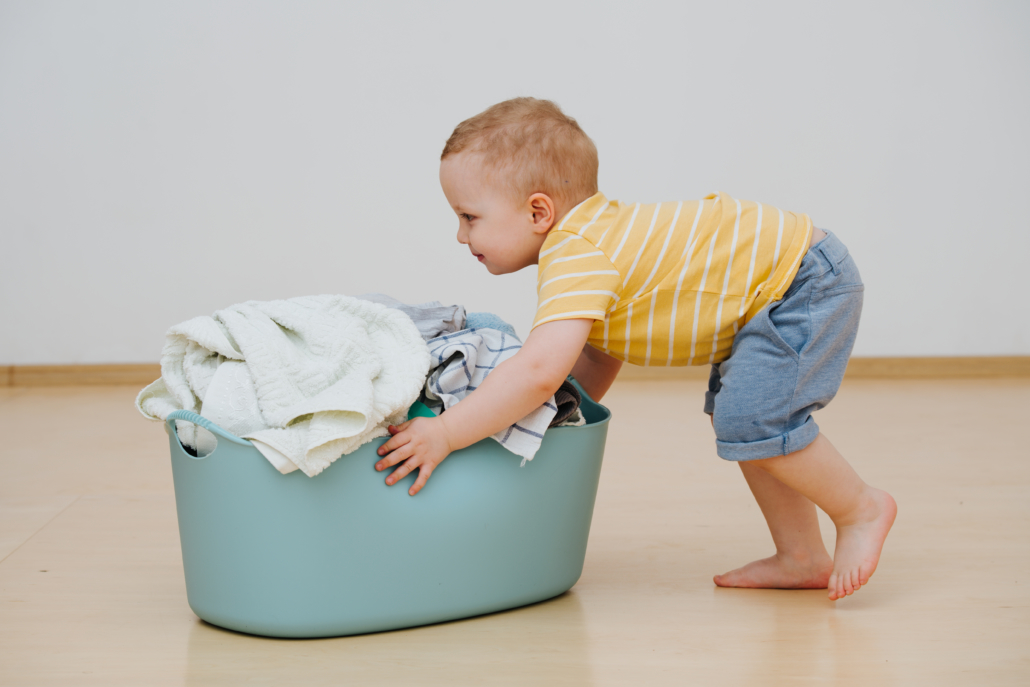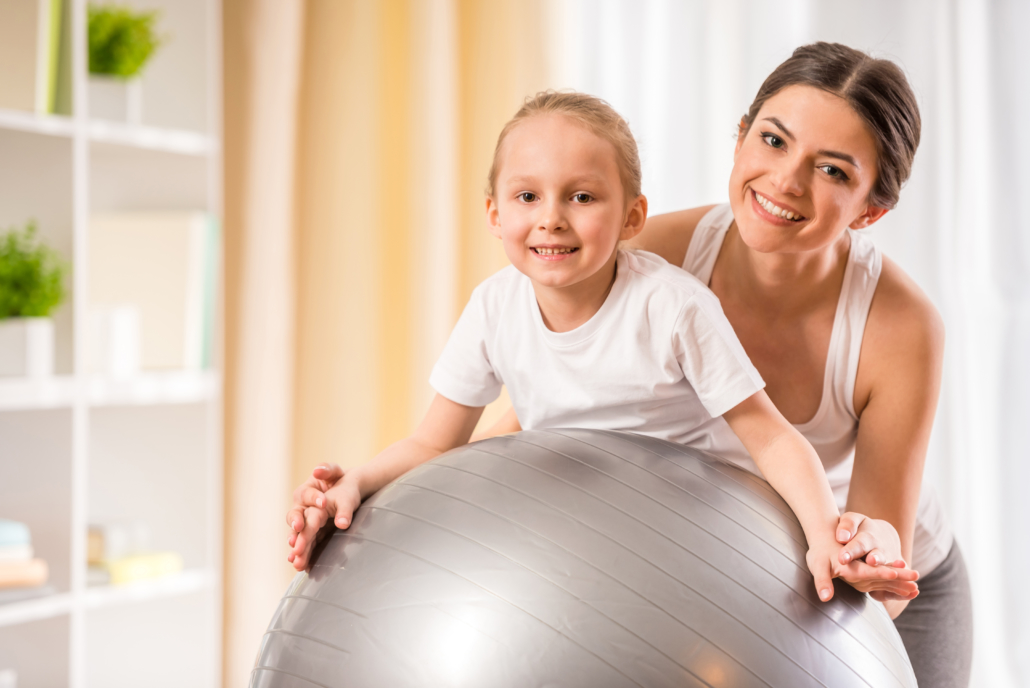

- Call 908 543 4390
- Email
- Dr.Joni Redlich PT,DPT


…It might be more than behavior and attention
By: Dr. Ali
Do you feel like your child never stops moving? Like they are here, there and everywhere, running in between destinations and fidgeting in their chair while eating a meal? Even if you have asked them to take a pause they seem to not listen, or be physically unable to follow the instructions you are giving to slow down, even if they are traditionally a very good listener? Being in constant motion can be related to certain diagnoses, like ADHD. ADHD often presents with additional signs and symptoms, like forgetfulness, difficulty staying on task, trouble listening while another is talking, excessive talking, unsafe and impulsive behavior, and/or trouble with turn taking. Regardless of whether your child has a diagnosis of ADHD or not, there may be another factor contributing to their need for constant motion.
That “thing” is something we PT’s call postural control. Postural control defined as the act of maintaining, achieving, or restoring a state of balance during any posture or activity (1). When someone has a very “fine tuned” postural system, their body, vestibular system (little balance center in the ears), and eyes are telling their brain where they are in space and what position their body has to hold. Then their brain sends signals to the muscles to hold that specific position. In order for all of this to work, the eyes, the vestibular system, and the body have to send accurate signals, the brain has to correctly process this information, and the body must be able to coordinate muscles on all sides to hold the position steady. Phew, even thinking about this long process can make someone tired!
When there is misinformation, trouble processing the information, or trouble coordinating the body in response to the brain’s signals, it will show in the body. When this happens, the child’s body may sway back and forth while they are trying to sit still in a chair, they may need to continuously move their feet instead of standing still, or they may just keep changing position when the one they are currently in becomes too hard to hold. When children are in constant motion, it often shows us PT’s that they are stuck constantly “restoring” their state of balance, as opposed to “maintaining” as the definition says above. Their body feels like it is always at risk of falling, so they move to catch themselves and prevent this. It may not look like that is what is happening when they are step, step, stepping, but if they are stuck constantly restoring their balance with decreased postural control, this is what their body is telling them is happening.
When we see kids who show us this constant need for motion, we help them improve their postural control so that they can achieve and maintain steady postures. This is important for so many reasons other than just giving them greater stability. Sometimes when postural control improves, a child has an easier time paying attention to tasks and school lessons, because part of their brain isn’t being used to keep them on balance. All of that brain energy that was being used to signal movement that would prevent them from falling can be allotted to other things, because their balance system is operating on autopilot!
If you see your child having difficulty staying still and want to get another opinion, come in to KidPT for a free discovery visit, and a PT can answer any questions you may have about this topic!
References:
By: Dr. Ali
This week is St. Patrick’s Day and with all of the green, Leprechaun fun, we wanted to add some fun moves to your family’s festivities! If you need a visual version of these exercises, click above to view the exercises in video form!!
 We hope you have fun getting JIGGY with it! We know you will all be the best rainbows, pot o’ gold jumpers, jig dancers, and gold coin sharers out there! Happy St. Patrick’s Day everyone!
We hope you have fun getting JIGGY with it! We know you will all be the best rainbows, pot o’ gold jumpers, jig dancers, and gold coin sharers out there! Happy St. Patrick’s Day everyone!
Today’s Frequently Asked Question
Parents often ask us the difference between school physical therapy and private physical therapy.
I mean, why should a parent pay for a service they can get for free at school??!!
I totally get that, so I thought I would explain more in a blog post. Because If they were the same, you would be right! There would be no reason to invest in therapeutic care for your child that is being provided for free at school.
Let’s get into how they’re the same and how they’re different beyond their location of services.
Isn’t Physical Therapy, Physical Therapy?
Physical therapists are all licensed to provide physical therapy and to work with all ages and all settings. However, not only do goals change depending on the setting and the individual, but the role does too.
The role of physical therapy in the school is to support a child’s access to education. It is to support their ability to participate in the least restrictive environment and support the motor skills needed at school. The services are determined by the student’s IEP, Individualized Education Plan, and is a related service based on education law.
Private physical therapy can look outside of the child’s education to look at the bigger picture of a child’s life today and in the future. Private physical therapy can focus on goals from all parts of a child’s life, from keeping up with the family at the park to protecting a child’s joints so that they will be strong, healthy and pain-free for the future.
Many children will benefit from physical therapy services in both settings to help them achieve success at school while also being able to guide the child towards their own personal potential.
If you have questions as to the best ways to support your child, reach out to us today and one of our physical therapists can hop on the phone with you and chat about your options. We are here to support you and your child and to help guide you to know your options so that you can best advocate for and support your child on their journey!
What is it and why do we PT’s care?
Hypermobility can be thought of as extra laxity in the joints, aka the joints are more flexible than is typical. In the clinic, we measure joints in degrees, and usually joints like elbows and knees are supposed to straighten to make the arm one line and the leg one line, which would measure to be 180 degrees. Hypermobility is really easy to see in the elbows and the knees especially because the angle will be visibly past straight, or past 180 degrees. It is definitely harder to see in the spine, the hips, shoulders, ankles, wrists, feet, and hands but they can be hypermobile too! A couple of extra degrees is completely fine and is within what we call normal. But, when 10 or more extra degrees can be seen and measured, we start to consider this within our treatment planning in the clinic.
You might be thinking, so what, my child’s knee can bend a little backward, why does this matter? That is a great question! We will use the knee as an example. It really matters if you see them standing and “hanging out” on a hyperextended knee (a knee that is over straight) for prolonged periods of time. There are plenty of kids and adults who have hypermobility throughout their whole bodies who have learned through athletics, or just through life, to control their mobility and stand with “neutral joints”. But, at baseline it is harder for those with hypermobility to control their joints. Because of this, they have to train their muscles and ligaments to sense when they are in the right place.
There are many systems that come into play to learn how to control hypermobile joints, but simply put, the muscles and ligaments need to learn how to sense when the joints are aligned versus when they are hyperextended. Then the muscles need to be trained to hold the joints in the “good place”, gaining control and strength through frequent practice. When this is practiced A LOT, it will become a skill that the child doesn’t need to think about, and will happen automatically.
We PT’s care about hypermobility because it can make it harder for children to sense what their bodies are doing as they move and harder to control their bodies. Part of our awareness of what our bodies are doing as we move comes from signals the joints send to our brain. Sometimes with hypermobile joints, these signals are decreased unless the joint is at its “end range” aka when it is fully extended. This causes children with hypermobility to lock out their joints while completing movements, which can lead to abnormal movement patterns in early life. Constantly moving with abnormal patterns on joints that are over extended can also cause joint injury in later life.
The other big factor that can be tied to hypermobility we also look for and treat is decreased coordination. When there is less control over the joints, it is hard to put movements together. This is especially so for movements that require standing on one leg, pushing through the arms, and moving the limbs, head, and/or trunk in different ways at the same time.
If your child shows signs of joint hypermobility and you believe it is affecting their ability to move easily and with control, call and inquire about our free Discovery Visits, where we can screen your child to see if physical therapy would be an appropriate option for him or her. If you have any questions about this article, feel free to contact us at info@kidpt.com .
Setting attainable goals & letting kids bask in their own successes!
If you’ve ever watched a pediatric physical therapy session, you will often see us putting a toy or desired object just out of a child’s grasp so they are inspired to roll, crawl, walk, scoot, or reach for it. Setting up the environment this way helps us to encourage kids to utilize emerging motor skills and strengthen those skills while building confidence. When we set our environment up, we are always thinking about where the “goalpost” is and whether or not the goal we are setting is attainable for the child at that time. If it seems too hard, we have to adjust the height, distance, or surface where the toy is located so that the child we are working with is working hard but can still be successful!
Setting attainable goals is so important when kids are learning new skills because we want them to build confidence as they are building skill and we want them to enjoy practicing and learning. One way we see kids get really frustrated or discouraged when learning a new skill is when the goalpost is frequently changing as they are working to reach it. An example of the “changing goalpost” that often causes our kiddos to get upset is when they are a new walker, taking unsteady steps to reach mom, dad, or a toy, and who or what they are trying to get to keeps moving backward. We TOTALLY understand the desire to do this, it gets them to walk more, which is good right? While the easy answer would be “Yes, they are walking more”, it is more complex than this. While they are chasing the desired person or object, they are thinking “Gee, I only had to walk that short distance to mom when I started, and I definitely thought I could do this, but now she is getting farther and farther away, and I am getting tired. I don’t know if I can do this anymore.” Even though they definitely CAN do the skill for short distances, their confidence is then starting to decrease, and they may not want to try again because it takes SO MUCH effort to be successful.
Don’t worry, this is a very easy fix! Say they are a new walker, have them start with a short distance first. Let them reach the object or person they are walking to and then let them play with the toy, hug mom or dad, and revel in the joy of their success with that mobility. Let them feel that joy for a few minutes while playing with the toy or hugging a parent. Then, once they have played for a short time, move the toy and redirect their attention to have them practice the skill again. Maybe even try to place the goalpost a little further next time, building on their ability as their confidence grows. Now they are learning that they can be successful with that motor skill, they are building confidence in it, while also learning that it is a new way of mobility they can use to reach things they want (a win, win, win)! Learning new motor skills takes a lot of patience, but overall the success your child will experience when moving and reaching each goal is worth the wait!
Happy Valentine’s Day! Today, we are going to keep it short and sweet! We know you are all probably having a blast sharing sweet messages with friends and family and eating chocolate, but you know what else is fun?! Valentine’s Day themed exercises, that’s what!! So become the best Cupid you can be today and share the love with these five sweet moves:
Need a better visual for what these moves should look like? Go visit our KidPT TikTok @kidpt_nj , our instagram @kidpt , or our facebook page @kidptnj to see Dr. Ali’s demonstrations for each of these lovely moves! We hope you have a happy Valentine’s Day with lots of chocolate to make the heart smile!
If you know what Physical Therapists do, you know one of the big things we focus on are MUSCLES! I’m sure you have heard all about your glutes and your abdominal muscles, but there is one group of muscles you may not have heard that much about, because it gets a little neglected sometimes. These muscles are the ones that help you BREATHE! Yes, there is a whole group of muscles that help you breathe, and just like every other muscle in the body, they can be EXERCISED to improve strength, endurance, and control. Normally, you don’t have to think when you breathe, which is really awesome because if we did have to think, we would probably not have the brain power to do anything else. But when we do think about breathing, we can teach the muscles to work in new and more efficient ways. Once you do train these muscles to work better, they start working like that for automatic breathing too! We miss doing these types of exercises at the clinic because of COVID, but that doesn’t mean they can’t be done in a safe, COVID free home environment!
Now, you might be asking yourself, why does this matter? Well, if you notice your child becoming out of breath while trying to walk and talk at the same time, they might have difficulty keeping their breathing efficient while they are moving around. If your child frequently becomes quiet or holds their breath when trying difficult things, they may have trouble coordinating breathing with complex motor and cognitive tasks. If this sounds like your child, here are some exercises that may be helpful for training their muscles for breathing for greater efficiency:
If you found this information interesting and believe these concepts may apply to your child, but would like a second opinion, come on over to KidPT for a consultation with one of our Physical Therapists! And remember, inhale, exhale, and you will go places!
Disclaimer: All information in this post is for educational purposes only. If looking for medical advice, seek a doctor or related healthcare provider.

We’re all back in the swing on school after a nice holiday break off! With the transition back to school comes a shift in priorities, back to classes and schoolwork, and we know all you want to do is set your child up for success in the new year! Many kids have trouble keeping their posture upright throughout the day, and good, supported posture is one of the key elements leading to good focus while in school. Though you might not be able to do much about this while they are in person, you can adapt their environment to support them while they are remote learning. Here are some things to look for and tips to get you started:
Remember, it is hard for anyone to focus when they are having trouble staying on balance or trouble activating their muscles for the long virtual school day. But, with these tips you can have your child on the path to postural support while learning in no time! You got this parents!
If you liked these tips or want to watch the video for this post, click here:

Stressed about the challenges the new year will pose for your child with learning new skills and reaching new goals? Don’t worry, you’ve come to the right place. Here at KidPT, we’re here to help your child to reach and exceed their potential. Just like we use every tool at our disposal to help our kiddos become successful here in the clinic, we believe parents should be empowered to do the same at home! To help you to help your child on their path toward success, we’ve written down some helpful hacks and philosophies that we use in our PT sessions every day that you can start to implement at home:
You’ve got this, and so does your child, and together you can be a confidence boosting TEAM!

Happy New Year! We all know what ringing in the new year means, new goals and shiny aspirations! We all hope that with the shift into a new year, we will be able to do things we haven’t done before, reach new heights, and achieve our dreams. With all of our heads in the clouds, we also have to remember that 2020 was a difficult year for everyone and that even though 2021 is a new year, we should cut ourselves some slack and give ourselves more time to work toward our goals along with time to destress. We don’t want to put too much pressure on ourselves, and we don’t want our kids to do this either. For them the new year means a new semester and new topics at school, and they can feel just as much stress from this shift as we adults can! Here are four ways that you and your child can destress and center yourselves with movement for a more successful and calm transition to the new year:



If you tried any of these strategies or if you would like more tips on how to stay calm and focused in the new year, email us at info@kidpt.com or message us on instagram @kidpt or facebook @kidptnj.
